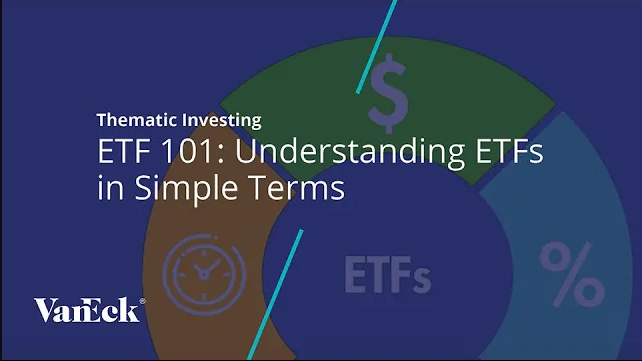ETF 101: Understanding the Basics
05 August 2019
Read Time 3 MIN
ETF 101: Understanding the Basics
ETF 102: The Inner Workings of ETF Creations and Redemptions
ETF 103: Is This ETF Right for You?
ETF 104: Getting the Most Out of Your ETF Trades
ETF 105: Gaining Efficient Access to Bond Markets
ETF 106: Debunking Fixed Income Myths
ETF 107: Passive vs. Active ETFs Explained
Options for Investors
An ETF (Exchange Traded Fund) is a diversified collection of assets similar to a mutual fund, though a key difference is that an ETF trades on an exchange throughout the day like a stock. Being relatively low cost, tax efficient, and generally easy to buy and sell, ETFs have become a popular choice for many investors.
As of December 2018, there were more than 2,200 ETFs available in the U.S. market alone, accounting for more than $3.4 trillion in assets under management.1 Through ETFs, investors can gain access to a wide variety of asset classes and strategies—from bonds to commodities, domestic and foreign markets, individual sectors, alternative investments and sophisticated active strategies. Investors can use ETFs to support a range of their investment goals, whether ETFs form the core of a portfolio or are used to add diversification or manage potential risk.
Key Attributes of an ETF
Low Cost
ETFs are known for their relatively low cost and simple fee structures. Unlike mutual funds, there are no minimum investment amounts beyond the share price of the ETF. Buying and selling an ETF is akin to trading a stock. Therefore brokerage commissions and trading spreads are considerations when evaluating the total cost of an ETF.
Transparency
Underlying ETF holdings are generally disclosed in full on a daily basis, and share prices are updated in real time. Investors can gain up-to-date insight into their range of exposures, which can empower more informed asset allocation decisions.
Tax Efficient
Thanks to their structure, ETFs may be considered some of the most tax-efficient investment vehicles available to investors today. The underlying mechanics, such as the way ETF shares are created and redeemed, generally result in daily operations that generate relatively few taxable events. This, in turn, can translate into lower taxes for investors.
Tradability and Accessibility
Investors can quickly gain access to different asset classes, geographic regions, sectors, or strategies, from niche to broad. ETFs can offer exposure to investments that might otherwise be difficult to access, such as commodities or currencies. Investors are also able to trade ETFs intraday and employ trading strategies not possible with mutual funds, such as selling short or using limit orders.
ETFs and Mutual Funds Compared
Both ETFs and mutual funds have attractive investor benefits including portfolio diversification and professional management. They also have some key differences of which investors should be aware. Below is a summary comparison of key attributes of each structure.
| ETFs | Mutual Funds | |
| Pooled fund of securities offering diversification benefits | X | X |
| Professionally managed | X | X |
| Returns based on fund's underlying holdings | X | X |
| Intraday Trading | X | |
| Minimum Investment Size | X | |
| Sales Commissions (front-end or back-end loads) | X | |
| Trading Spread | X | |
| Brokerage Commission | X | |
| Transparency | Holdings disclosed daily | Holdings disclosed monthly, quarterly or semi-anually |
| Average net expense ratio1 | 0.56% | 1.12% |
Key Takeaways
ETFs are versatile tools for investors, suitable for a wide range of investment goals. Being able to trade ETFs on exchanges like stocks gives investors flexibility to employ different trading strategies and offers a relatively quick way for investors to add diversification to their portfolio. Features such as daily transparency of holdings, simple fee structures, and tax efficient operations make ETFs historically a cost-effective and straightforward investment vehicle.
ETF issuers are continually introducing new strategies, from traditional index-tracking funds to innovative funds constructed around investment themes. As with any investment, investors should carefully evaluate an ETF to determine whether it fits well within their portfolio.
1 Source: Morningstar. As of 12/31/2018.
Related Insights
Related Insights
22 December 2023



